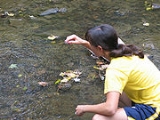
Ecological economics
Overview
Image:Sustainable development.svg|right|The three pillars of sustainability. Clickable.|275px|thumb
poly 138 194 148 219 164 240 182 257 219 277 263 291 261 311 264 331 272 351 283 366 300 383 316 394 287 408 261 417 224 424 182 426 154 423 119 415 87 403 58 385 40 368 24 347 17 328 13 309 16 286 26 263 43 240 64 224 84 212 107 202 Environment
Environment (biophysical)
The biophysical environment is the combined modeling of the physical environment and the biological life forms within the environment, and includes all variables, parameters as well as conditions and modes inside the Earth's biosphere. The biophysical environment can be divided into two categories:...
poly 324 219 334 226 343 234 351 242 359 251 366 263 371 276 375 287 400 279 417 272 438 263 453 252 466 241 477 229 488 214 497 193 482 189 463 188 423 188 398 191 376 196 352 204 Equitable
Equity (economics)
Equity is the concept or idea of fairness in economics, particularly as to taxation or welfare economics. More specifically it may refer to equal life chances regardless of identity, to provide all citizens with a basic minimum of income/goods/services or to increase funds and commitment for...
poly 319 221 330 229 337 235 347 244 357 258 365 270 371 287 358 289 344 291 321 292 303 292 284 290 268 288 272 275 278 261 287 249 297 239 Sustainable
Sustainable development
Sustainable development is a pattern of resource use, that aims to meet human needs while preserving the environment so that these needs can be met not only in the present, but also for generations to come...
poly 142 192 167 188 185 187 211 187 235 190 263 196 286 203 304 212 316 219 305 227 295 236 285 246 276 259 269 272 264 287 249 284 229 277 208 268 190 256 172 242 158 226 149 212 Bearable (Social ecology)
Social ecology
Social ecology is a philosophy developed by Murray Bookchin in the 1960s.It holds that present ecological problems are rooted in deep-seated social problems, particularly in dominatory hierarchical political and social systems. These have resulted in an uncritical acceptance of an overly...
poly 267 291 265 304 267 320 275 345 284 360 293 371 304 381 319 392 332 384 343 374 354 362 364 347 371 332 373 317 374 305 372 292 362 293 344 295 323 296 301 296 286 294 Viable (Environmental economics)
Environmental economics
Environmental economics is a subfield of economics concerned with environmental issues. Quoting from the National Bureau of Economic Research Environmental Economics program:...
poly 501 193 519 197 541 205 561 215 582 228 604 248 616 267 623 286 626 305 623 326 617 343 607 359 596 373 580 386 563 397 538 409 517 417 494 422 468 425 432 426 413 424 396 421 375 416 353 409 335 401 323 394 335 386 349 372 360 359 374 331 377 313 377 299 376 290 388 288 410 280 458 256 481 233 Economic
Economics
Economics is the social science that analyzes the production, distribution, and consumption of goods and services. The term economics comes from the Ancient Greek from + , hence "rules of the house"...
poly 141 188 139 173 143 147 152 126 169 107 191 88 216 75 242 65 280 55 310 53 352 54 379 60 415 71 447 88 461 99 475 112 488 128 496 147 500 162 500 176 500 189 471 185 452 183 410 185 369 194 337 206 319 216 305 208 279 197 257 191 230 185 199 183 199 182 199 183 Social
Society
A society, or a human society, is a group of people related to each other through persistent relations, or a large social grouping sharing the same geographical or virtual territory, subject to the same political authority and dominant cultural expectations...
Ecological economics is a transdisciplinary field of academic research that aims to address the interdependence and coevolution of human economies
Economy
An economy consists of the economic system of a country or other area; the labor, capital and land resources; and the manufacturing, trade, distribution, and consumption of goods and services of that area...
and natural ecosystem
Ecosystem
An ecosystem is a biological environment consisting of all the organisms living in a particular area, as well as all the nonliving , physical components of the environment with which the organisms interact, such as air, soil, water and sunlight....
s over time and space.
Unanswered Questions

